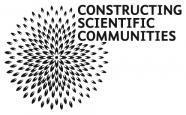Entomologist's Monthly Magazine (1864-)

The teenage entomologist Thomas Blackburn (1844-1912) was not easily discouraged. His first effort to replace the discontinued Entomologist’s Weekly Intelligencer (1856-61) with his own periodical, the Weekly Entomologist (1862-63), ended in commercial failure. However, in 1864, before he had even turned twenty, he was formulating plans for a second attempt. Blackburn had since moved from his native Cheshire to London, taking up employment as a civil servant. His correspondence from this period is written upon official stationery, stamped with ‘Somerset House’, and it must be assumed that his superiors would not have approved of this entomological use of government property. Relocating to the capital also allowed Blackburn to make acquaintance with the Intelligencer‘s erstwhile editor, Henry Tibbats Stainton (1822-92), along with other leading men of the Entomological Society of London. Among these entomologists was Henry Guard Knaggs (1832-1908), who encouraged the young Blackburn in his plans for a new periodical. The result of these discussions was a letter Blackburn wrote to Stainton in which he laid out a proposal for what would become the Entomologist’s Monthly Magazine.

Thomas Blackburn in much later life
Among Blackburn’s suggestions for the periodical, to which Stainton agreed, was a plan to share the considerable labour of producing such a publication. Rather than a single editor, the Entomologist’s Monthly Magazine was managed by a committee. This group initially consisted of Blackburn, Stainton, and Knaggs, along with Robert McLachlan (1837-1904) and Edward Caldwell Rye (1832-85). Stainton and McLachlan were men of independent wealth, while Knaggs was a well-to-do general practitioner. Rye, meanwhile, was a relatively humble clerk with a genius for entomological illustration. They divided the work of editing amongst themselves according to their respective specialisms (with the exception of Blackburn): Stainton was responsible for microlepidoptera (small moths), Knaggs for macrolepidoptera (large moths and butterflies), Mclachlan was a world-renowned expert on Neuroptera (net-winged insects), and Rye worked on Coleoptera (beetles). All these men were good friends, with committee meetings held at each of their homes in turn. Less formal discussions took place during gatherings of the Entomological Society and other scientific coteries, and they were incessant correspondents.
From the outset, the Entomologist’s Monthly Magazine (or the ‘E. M. M.’, as it became fondly known among entomologists) was intended as a very different publication to the Intelligencer. The most obvious dissimilarity is signified by the title, with the periodical being a monthly rather than a weekly. Blackburn argued that this would reduce the workload of the editors, but it necessarily had a significant impact upon the kind of information the magazine contained. Whilst the raison d’être of the Intelligencer had been to rapidly circulate short notices regarding the capture of insects and other time-sensitive news relating to the fieldwork of entomologists, the Monthly Magazine published longer pieces, mostly devoted to works of taxonomic classification. The opening article of the first issue was written by Henry Walter Bates, describing ‘new species of butterflies from Guatemala and Panama’. Although the magazine prided itself on its ‘amateur character’, the shift in content led to a far more selective readership, precluding many of the collectors and beginners who were welcomed by the Intelligencer. Correspondence between the editors reveals that this was a deliberate decision to distance the new magazine from Stainton’s previous publication, as they consciously chose to exclude shorter, gossipy notices of the kind printed in the Intelligencer in favour of more dense, scientific content. As a result, the number of contributors was considerably more limited, and mostly those who were already members of the Entomological Society. These were not professionals, but rather represented the metropolitan scientific elite from which Stainton and his co-editors were drawn.

Title page of the E. M. M.‘s first volume
Despite Blackburn’s instigation of the periodical, the older, more eminent men of the editorial committee came to dominate it. Within a few years of commencing the Entomologist’s Monthly Magazine, he gave up his position to take holy orders and embarked on an ecclesiastical career that would lead him to emigrate, first to Hawaii and then to Australia. Stainton, on the other hand, would continue to edit the periodical until his death, and was still busy correcting proofs the day before he died in 1892. The Entomologist’s Monthly Magazine continues to be published, and although it is only issued three times a year, it retains its title and sense of history. Much of its content is now the work of professional entomologists, but it continues to use the epigraph from the very first volume, a quote from the French entomologist Joseph Alexandre Laboulbène (1825-98): ‘I therefore exhort everybody to avoid anything personal in their writing or any allusions that exceed the boundaries of sincere and courteous debate’. It therefore seems that over 150 years later, entomologists still need occasionally to be reminded that any disagreements should be conducted in an amicable manner.
--Matthew Wale



